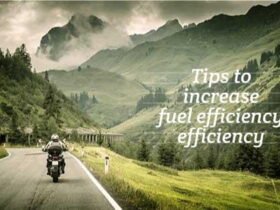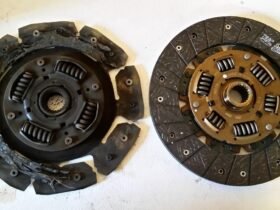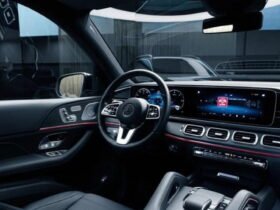Function of a Turbocharger
A turbocharger (commonly known as turbo) is a device used in vehicles to force air into an internal combustion engine to improve the power output with same fuel. In other words, Turbocharger is a turbine driven forced induction which increases Internal Combustion engine’s efficiency and power output by forcing extra compressed air into the combustion chamber. It is a form of a supercharger except it doesn’t draw power from engine crankshaft. Overall its primary objective is to improve performance of IC engine by increasing air flow through exhaust gases.
A turbocharger is basically a combination of a compressor and a turbine, both mounted on a common shaft. Turbocharger uses the exhaust gases of the engine itself, to rotate the turbine which in turn moves the compressor.
Mainly two type of compressors are used in a turbocharger.
1)Centrifugal compressors
2)Axial flow compressors
Centrifugal compressors are generally used where the size of turbocharger is to be kept small, for e.g., turbocharger in cars.
Axial flow compressors are used in applications of larger radial units where internal modifications might be needed. They are most efficient with engines using heavy oils. Example: Heavy trucks,etc.
 |
Parts of turbocharger:
There are 3 main parts of a turbocharger. They are:
1)Turbine
2)Impeller a.k.a Compressor
3)Central Hub
Turbine Side
Cast iron material is used to make turbine side of a turbocharger. The inlet side of the turbine have nozzle blade ring which is used for two purposes:
- To guide the incoming gas onto the turbine wheel and
- To house the turbine bearings.
The outlet side of the turbine casing consists of blower and air passages which are used to supply air.
Compressor Side
This part or casing deals with drawing air from the surrounding areas i.e engine room or deck spaces. If air is drawn from the deck spaces, special ducting is made for the same. The advantage of drawing air from the deck spaces is low air temperature and humidity. While the advantage of drawing air from the engine space is that the air is pressurized and there is no need for long and complex ducting arrangements.
The main parts on the compressor side are inducer, impeller, diffuser and inlet and outlet casing.
Also see Engine oil types, properties and their different grades.
Working Principle of a Turbocharger:
There are 2 wheels in a Turbocharger, one is Turbine Wheel and the second one is Compressor Wheel (both looks same). Both the wheels are responsible for the working of a turbocharger. They are both connected to one another with the a single shaft.
Turbine Casing and Compressor Casing are used to cover both the wheels (turbine wheel and compressor wheel).
However, Turbocharger has Inlet and Outlet Ports for incoming and outgoing of gases.
When the air-fuel mixture is burned in the engine, the exhaust gases are sent to Turbocharger from the Turbine opening, which is Inlet port of it. Then, the gases run the turbine and compressor also starts rotating because it is on same shaft.
It has a opening on casing from where the atmospheric gases comes into the casing and then it is compressed by Compressor.
The port on compressor side is connected to the Inlet Valve of Engine and is ‘Exhaust port of Turbocharger’. From the exhaust port of Turbocharger the compressed or pressurized gases goes into the engine.
Thus, the cycle is further repeated till the engine is in ON condition. Once the engine has more air, more combustion takes place and hence you get a boost.
Advantages:
- Above all, It provides excess air for the combustion of fuel engine so less emission and better combustion.
- Increased horse power for the same engine is obtained due to the burning of more fuel.
- It reduces NOx emission.
- Better fuel efficiency.
- Smaller size of engine for the same power.
- It doesn’t draw power from engine like supercharger does it.
Disadvantages:
- However, turbochargers are costly.
- A sufficient amount of exhaust gases are required to run a turbocharger.
- Above all, turbochargers are difficult to maintain. Since lot of heat gets generated & also needs frequent lubrication.
- Turbo lag. This is common problem in all turbochargers. As turbo takes some time to spin up speed. All turbo works starts working at a particular rpm.
- In some turbo equipped cars. Till the turbo is not spinning the cars feels sluggish to drive.
Applications:
Mostly diesel engines are preferable for the installation of turbochargers. But today petrol engines are also equipped with turbochargers for increasing overall performance of the engine. Turbochargers aren’t expensive. Today even the smallest and cheapest diesel car you will see on the roads will have a turbocharger.
However, the fact that ‘diesel engines uses turbocharger’ is that diesel as a fuel is not as combustible as petrol. The air-fuel mixture inside the cylinder should be at higher pressures for effective combustion of diesel. Strong and heavy parts are used to make a diesel engine so that it can withstand higher combustion pressures.
Wherever, the heavier components of a diesel engine cannot rotate at higher rpm. thus, lesser rpm means lesser air intake into combustion chambers. Hence a turbo charger helps a diesel engine to get more air into the combustion chamber.
Image credits: Bing Search










Leave a Reply
View Comments